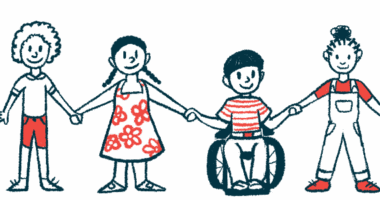Neurologists Confident SMA Treatments Help Youngest Patients Most

Pediatric neurologists’ expectations in terms of treatment benefits are decidedly higher for infants and toddlers with spinal muscular atrophy (SMA) types 1 and 2 than for adolescent patients, a study in Spain shows.
Notably, neurologists with low aversion to ambiguity and low expectation of treatment benefits were more likely to make suboptimal treatment decisions in hypothetical case scenarios. Ambiguity aversion is defined as dislike for events with unknown probability over events with known probability.
Future studies in other regions and involving different healthcare systems are needed to confirm these findings.
The study, “Therapeutic Decision-Making Under Uncertainty in the Management of Spinal Muscular Atrophy: Results From DECISIONS-SMA Study,” was published in the journal Neurology and Therapy.
The approval of three disease-modifying therapies in the past six years have revolutionized SMA’s therapeutic landscape.
While it is well-established that earlier treatment results in better outcomes than delayed treatment after a longer disease duration, no clinical trials to date have directly compared the safety and efficacy of the different SMA treatments.
As such, “there are many uncertainties about treatment selection and expectations,” the researchers wrote, adding that decisions about SMA treatments are “becoming more complicated” and need to consider “different factors, including patient age, disease duration, [simultaneous health conditions], route of administration, and patient preferences.”
While “uncertainty is one of the most important contributing factors affecting decisions in medical care,” little is known about pediatric neurologists’ preferences and expectations in terms of SMA treatments.
To address this, researchers in Spain and Canada conducted a web-based pilot study, called DECISIONS-SMA, in collaboration with the Spanish Society of Pediatric Neurology (SENEP).
The study assessed therapeutic expectations, preferences, and choices of pediatric neurologists from across Spain with expertise in SMA when faced with simulated case scenarios with different SMA types and clinical status.
A total of 50 participants were recruited through an invitation by SENEP from June 3 to Nov. 2, 2021. They were presented with 11 common case scenarios of patients with the severe SMA type 1 and the milder type 2 to assess treatment initiation and escalation/switch choices.
The study’s main goal was to evaluate therapeutic inertia (TI), defined as the number of simulated scenarios in which pediatric neurologists did not opt for treatment initiation or escalation/switch when warranted, based on treatment recommendations.
For four of these scenarios, participants also were asked “On a scale from 1% to 100%, what are your expectations of improvement in 2 years for this patient with any of the treatments currently available?”
These cases included a 5-month-old infant with SMA type 1, a 1-year-old toddler with type 2 disease, a 16-year-old adolescent with advanced SMA type 2 and delayed diagnosis, and a 15-year-old adolescent with stable type 2 disease who was diagnosed at the age of 3.
Researchers also analyzed behavioral aspects that could influence neurologists’ decision-making, including tolerance to uncertainty and aversion to ambiguity.
A total of 35 participants (70%, 22 women and 13 men) completed the study. Their mean age was 40.6 years, they had a mean of ,11.5 years of experience as pediatric neurologists and a mean of 8.9 years of experience managing SMA.
A total of 14 (40%) were specialized in neuromuscular disorders and nearly one-third (31.4%) had been involved in clinical trials.
There were no significant differences in terms of features between physicians who completed the study and those who did not.
More than half (57.1%) of the pediatric neurologists showed ambiguity aversion, while 28.6% had low tolerance to uncertainty.
Results showed that TI affected nearly all participants and was detected in 147 (38.2%) of 385 individual therapeutic decisions. Pediatric neurologists made suboptimal treatment decisions in a mean of about four scenarios, independently of whether they were specialized in neuromuscular disorders.
Physicians also reported a modest (43%) overall expectation for improvement with available therapies for the four scenarios. Notably, this expectation was significantly higher for the two younger SMA cases (59.6%) relative to the two older cases with delayed diagnosis and longer disease course (20.2%).
Further analyses showed that lower aversion to ambiguity and lower expectation of treatment response were significantly associated with higher overall and treatment-switch TI after adjustment for potential influencing factors, including participants’ age and years of experience.
In turn, older age, lower years of experience as pediatric neurologist, lower ambiguity aversion, and lower expectation with treatment were linked to higher inertia in treatment initiation.
These findings highlight that “therapeutic inertia is a common phenomenon in pediatric neurologists caring for patients with SMA,” the team wrote.
Notably, this is in line with concerns previously raised by families of SMA patients on the risk of treatment decisions being “influenced by subjective and individual preferences of pediatric neurologists rather than being primarily based on evidence,” they wrote.
Also, pediatric neurologists “who were more prone to choose options with unknown probability were more likely to select treatment options that were not based on recommended guidelines,” the researchers wrote.
Moreover, “pediatric neurologists managing patients with SMA were optimistic regarding treatment improvement in cases with early diagnosis, but had lower expectations when treatment delays and advanced patient age were present,” the researchers wrote.
These results “may contribute to the growing evidence of the relevance of value-based shared decision-making” for SMA management, and may help in the development “of educational interventions and health policy strategies that ultimately improve the well-being and outcomes of patients with SMA and their families,” they wrote.
Larger studies, involving pediatric neurologists and healthcare systems from other countries and regions, are needed to confirm these findings.
The post Neurologists Confident SMA Treatments Help Youngest Patients Most appeared first on SMA News Today.




